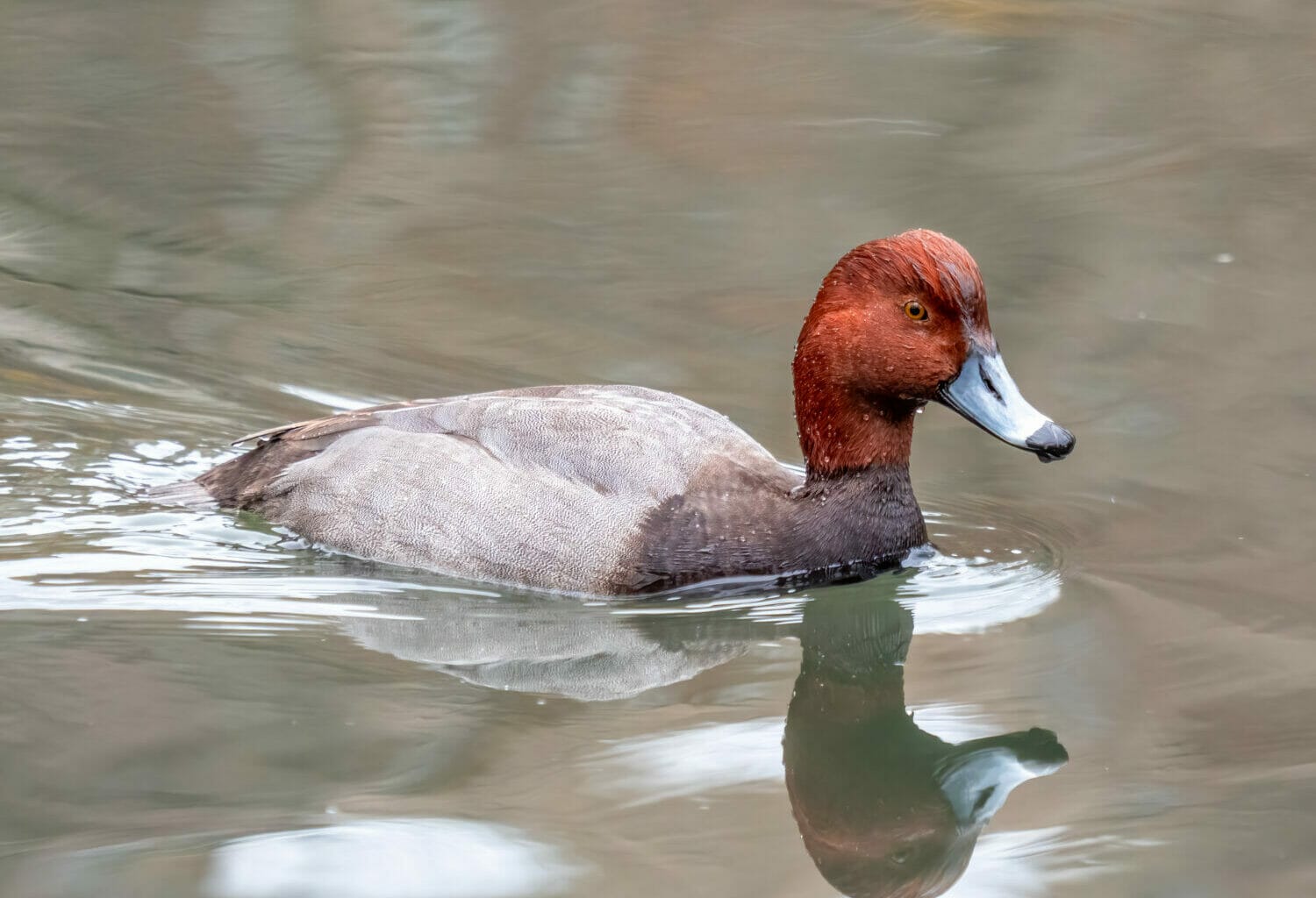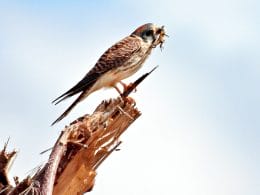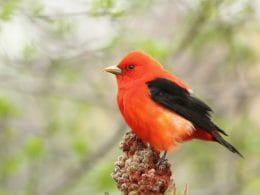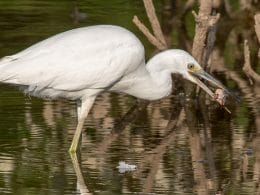The Sunshine State of Florida is famed for its wildlife. From alligators in backyard pools to huge snakes emerging from the undergrowth, there is always a headline. In reality, these things happen rarely and most animals just want to get on without human interference. It is quite amazing that they seem to co-exist largely successfully in Florida and while some birds have been driven out, there are still lots of havens for them in the state. In this post, we will be looking a red or partially red colored birds resident or visiting Florida.
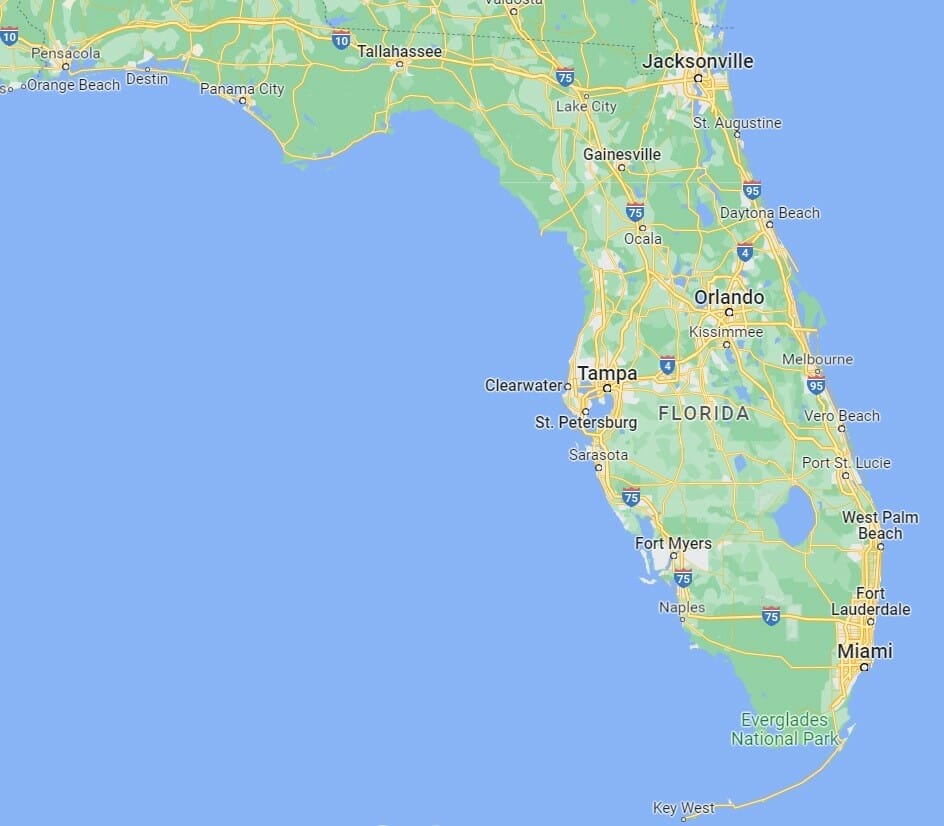
Birds of Florida
With temperate, sub-tropical and tropical zones in Florida, it is no wonder there is so much bird life. Migrating birds often pass through the northern parts of the state while the Everglades might see tropical vagrants from the Caribbean. The long and humid summers coupled with mild but wet winters means that flora can flourish and so animals and birds can too. Coming behind behemoth states like Texas and California, Florida still ranks in the Top 10 for number of recorded species on eBird. But the big question remains – how many of those species are red or partially red?
Ten of the best
Red-shouldered Hawk (Buteo lineatus)
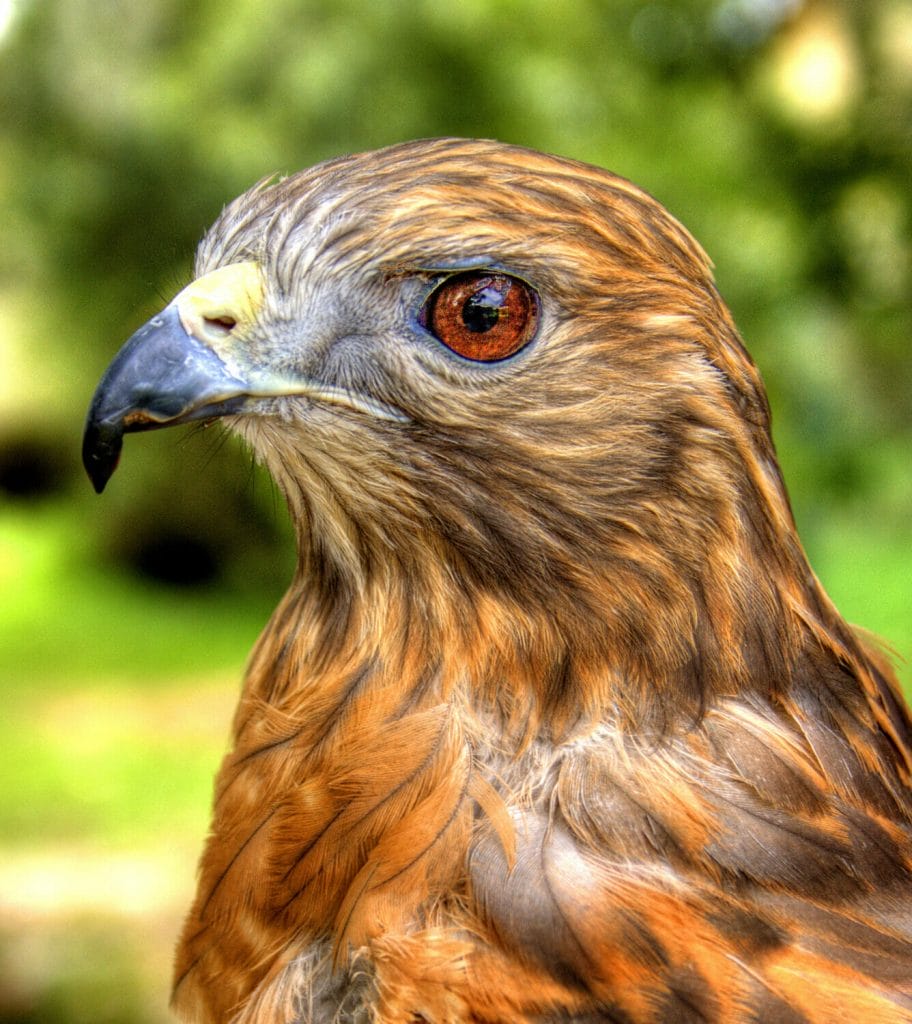

Identification and Size
This is a very attractive hawk with intricate barring under the wing and on the tail. The breast and head are a rich orangey red that extends to the back of the neck.
Length: 16.9 – 24 inches
Wingspan: 37 – 43.7 inches
Weight: 17.1 – 27.3 ounces
Distribution

The Red-shouldered Hawk can be found throughout the state, even on the Keys. It is present all year round.

Call
Diet
The Red-shouldered Hawk feeds on small mammals, amphibians and reptiles.
Interesting Fact
The Red-shouldered Hawk has a love hate relationship with local crow populations. The American Crow will try to steal and snatch chicks from the Red-shouldered Hawk as well as the other way around. If necessary, however, they will join forces to drive out larger, predatory owls.
Redhead (Aythya americana)

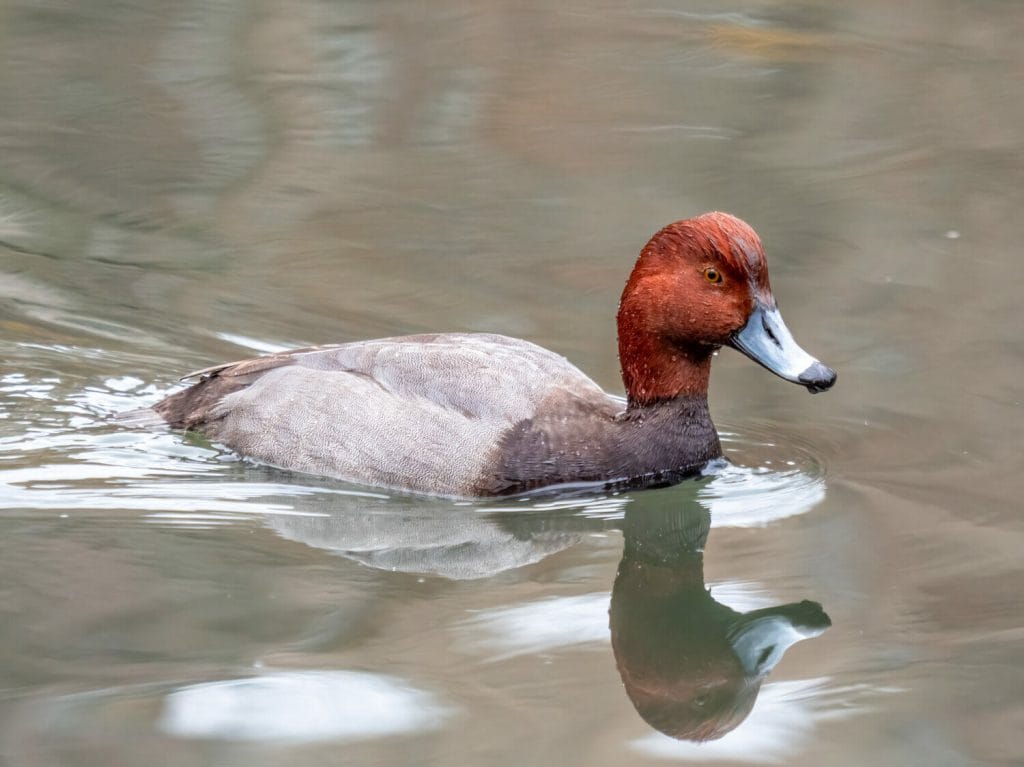
Identification and Size
While the female Redhead is a dull brown all over, the male is rather spectacular. He appears gray colored but it is actually a very fine pattern on his body. A blue bill sits on a deep red head.
Length: 16.1 – 21.3 inches
Wingspan: 29.5 – 31.1 inches
Weight: 22.2 – 52.9 ounces
Distribution

The Redhead overwinters in Florida but can be seen throughout the year in smaller numbers. Concetrated in central Florida, it is also present around the coast.

Call
Diet
The Redhead eats aquatic plants and tubers as well as some seeds.
Interesting Fact
The male Redhead is quite the acrobat. During courting, he will throw his head back until it just about touches the tail and then snap it forwards while calling to the female.
Red-tailed Hawk (Buteo jamaicensis)
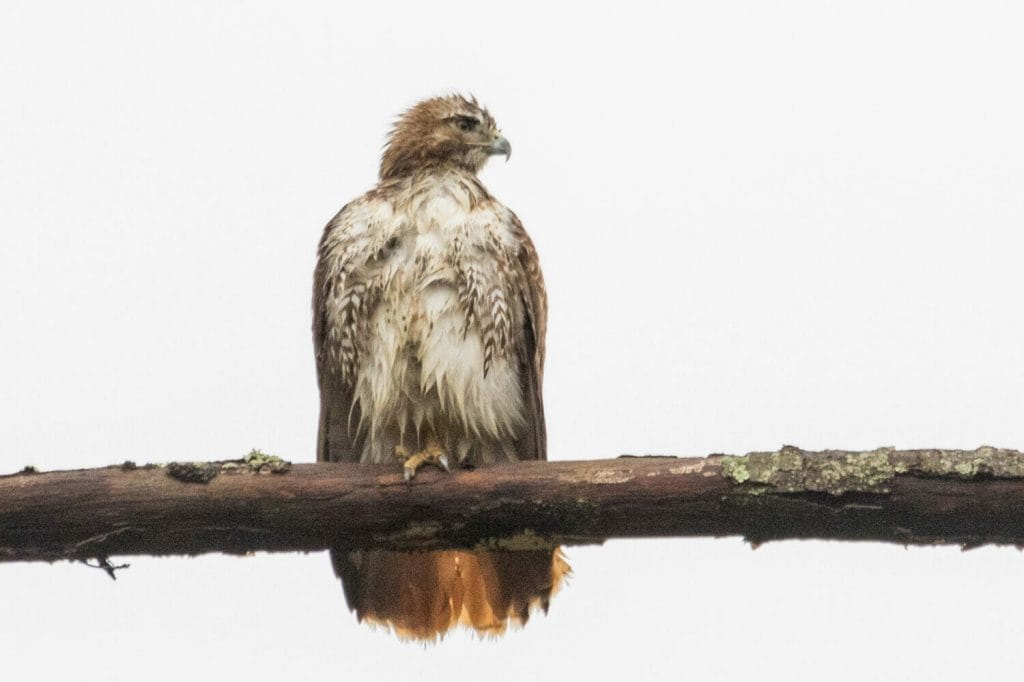

Identification and Size
A stocky raptor with relatively short body and head. This hawk has very variable plumage ranging from very pale to mid brown but it always has the distinctive red tail.
Length: 17.7 – 25.6 inches
Wingspan: 44.9 – 52.4 inches
Weight: 31.8 – 51.5 ounces
Distribution

The Red-tailed Hawk can be seen reliably and regularly throughout the whole of Florida.

Call
Diet
This raptor will hunt for rodents and other mammals up to the size of a hare. They will also take birds like pheasants and even snakes.
Interesting Fact
The Red-tailed Hawk has such a spine-chilling call that it is frequently used on movie soundtracks for any type of raptor call.
Reddish Egret (Egretta rufescens)
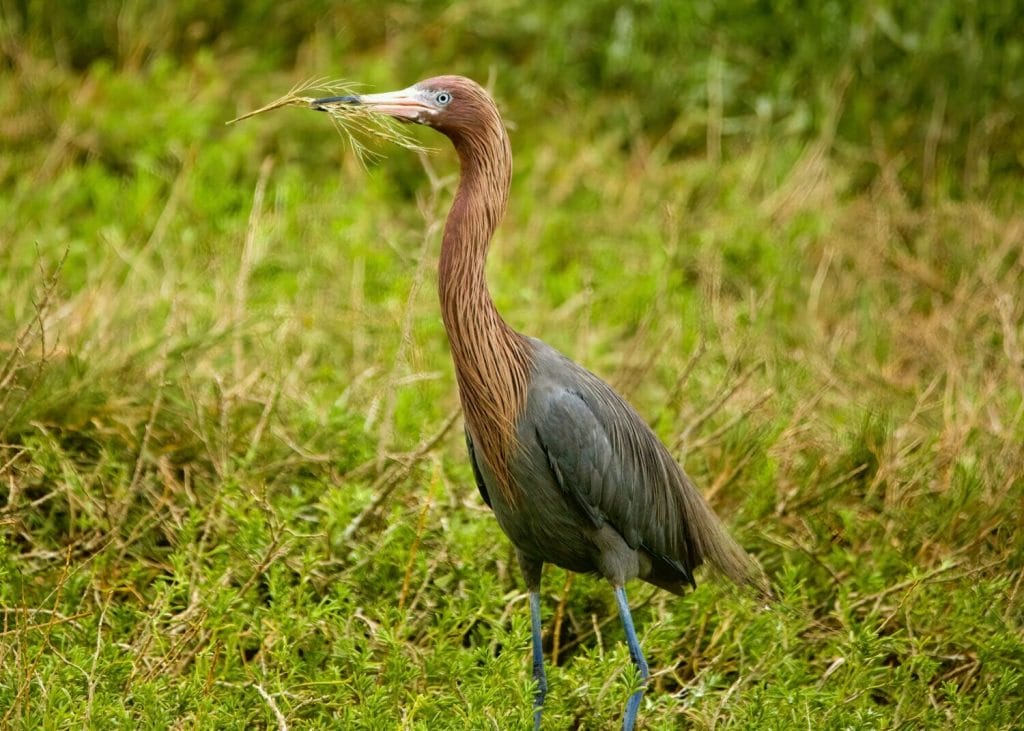
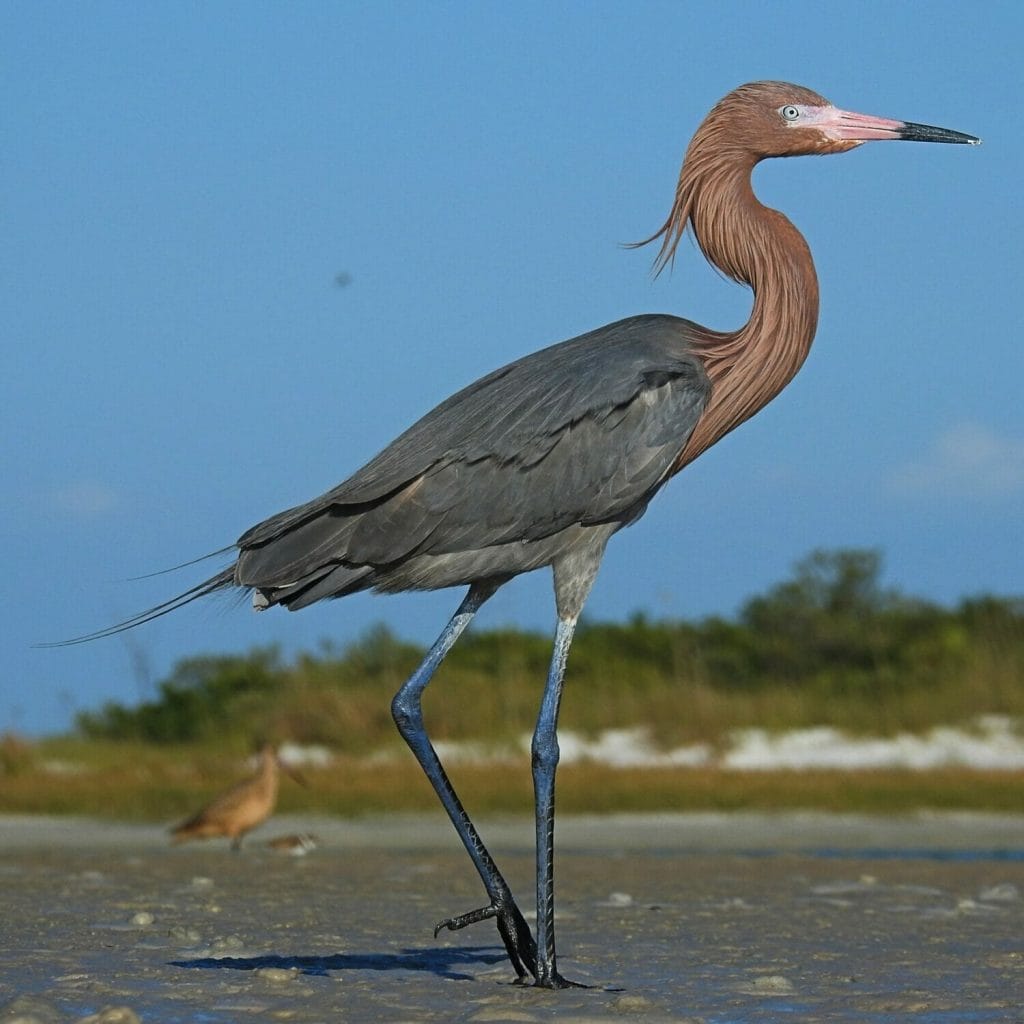
Identification and Size
A very unique and elegant egret with a pale and dark morph. It is in the dark morph where we see the rusty red neck and head on top of a gray body.
Length: 27.6 – 31.5 inches
Wingspan: 45.3 – 46.5 inches
Weight: 24.7 – 30 ounces
Distribution
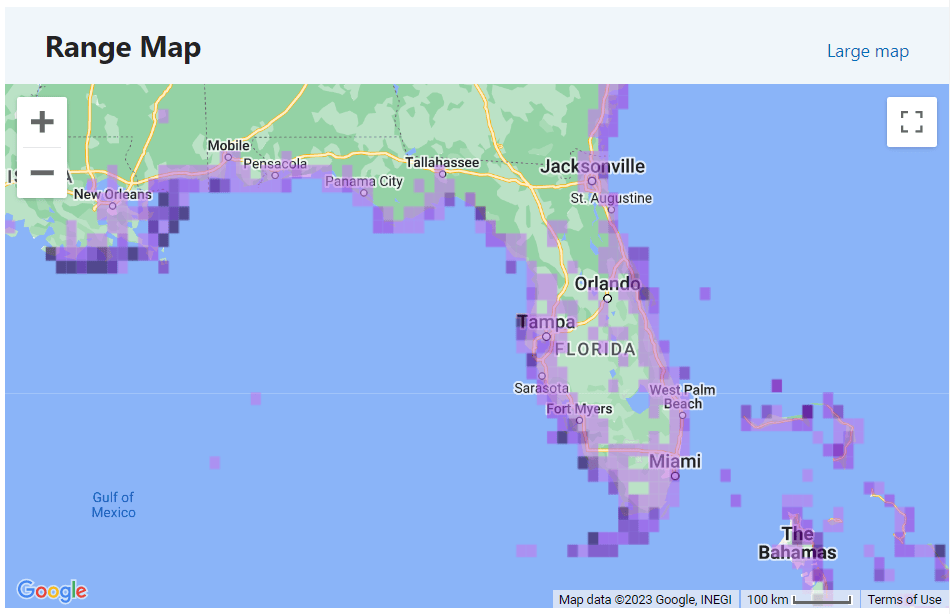
While present in the state all year round as indicated by the distribution chart below, the Reddish Egret is seen mainly in coastal areas.

Call
Diet
The Reddish Egret predominately hunts and eats small fish.
Interesting Fact
The white morph Reddish Egret is much rarer than the darker version but it doesn’t seem to matter when it comes to mating. These egrets do not mind and nests can contain chicks of both colors.
Red Knot (Calidris canutus)
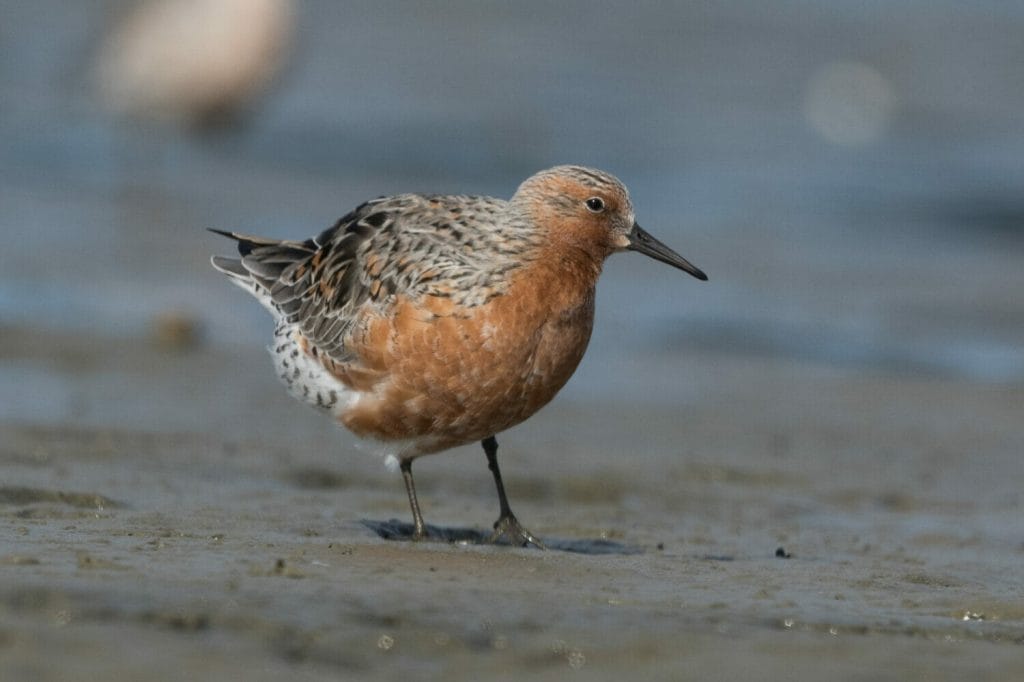
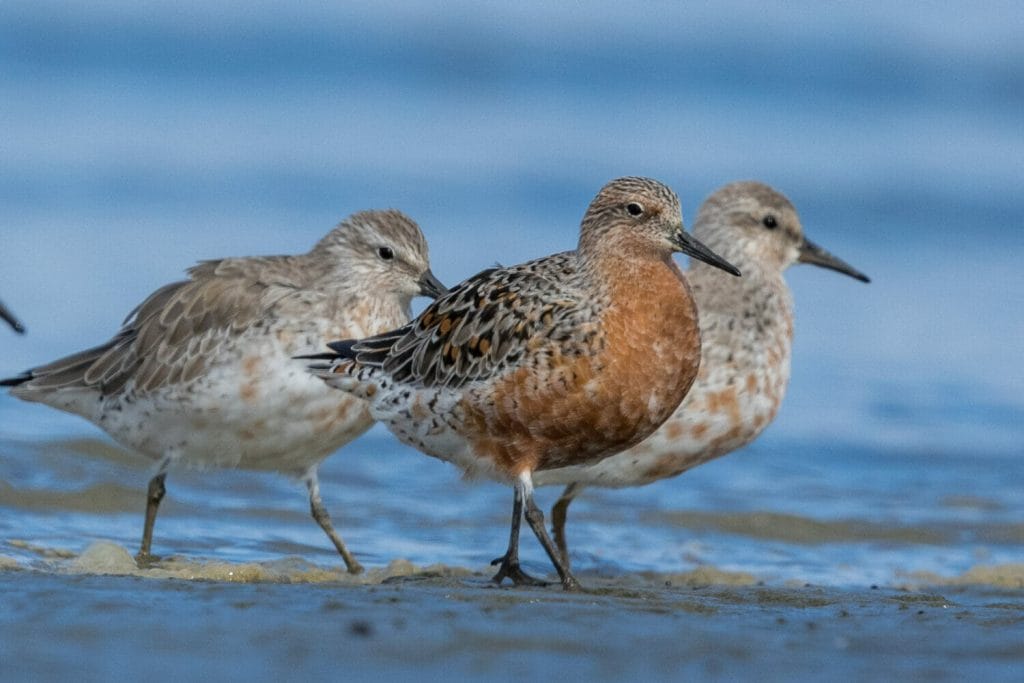
Identification and Size
A small and indistinct wader when in non-breeding plumage. However, it is a very attractive bird during the breeding season with a red belly and face.
Length: 9.1 – 10.6 inches
Wingspan: 22.4 – 23.6 inches
Weight: 4.4 – 7.2 ounces
Distribution

The Red Knot is migratory and so, its presence will vary in quanity during the year. It is a wader and as such will be most likely seen on beaches and shorelines.

Call
Diet
Red Knot are waders but prefer to keep their feet dry and hunt along the shoreline, picking up crustaceans and small insects there.
Interesting Fact
The Red Knot has the largest gizzard of any shorebird proportionate to its size. The gizzard is the part of the stomach that grinds up the shells of the molluscs eaten by the bird.
Red-breasted Nuthatch (Sitta canadensis)

Identification and Size
This is a smaller nuthatch with black and white stripes on the head merging into a gray/blue back. The breast is red at the bottom and fades into a white throat at the top.
Length: 4.3 inches
Wingspan: 7.1 – 7.9 inches
Weight: 0.3 – 0.5 ounces
Distribution

The Red-breasted Nuthatch is only seen in low numbers and as a migratory bird, it returns to the north during summer. When overwintering in Florida, it generally stays in the northern part of the state.

Call
Diet
The Red-breasted Nuthatch will feed on arthropods during breeding season and seeds during the rest of the year.
Interesting Fact
The Red-breasted Nuthatch likes Spring Break! They will start their migration earlier than most other birds and arrive at their wintering location by September/October.
Red-throated Diver (Gavia stellata)

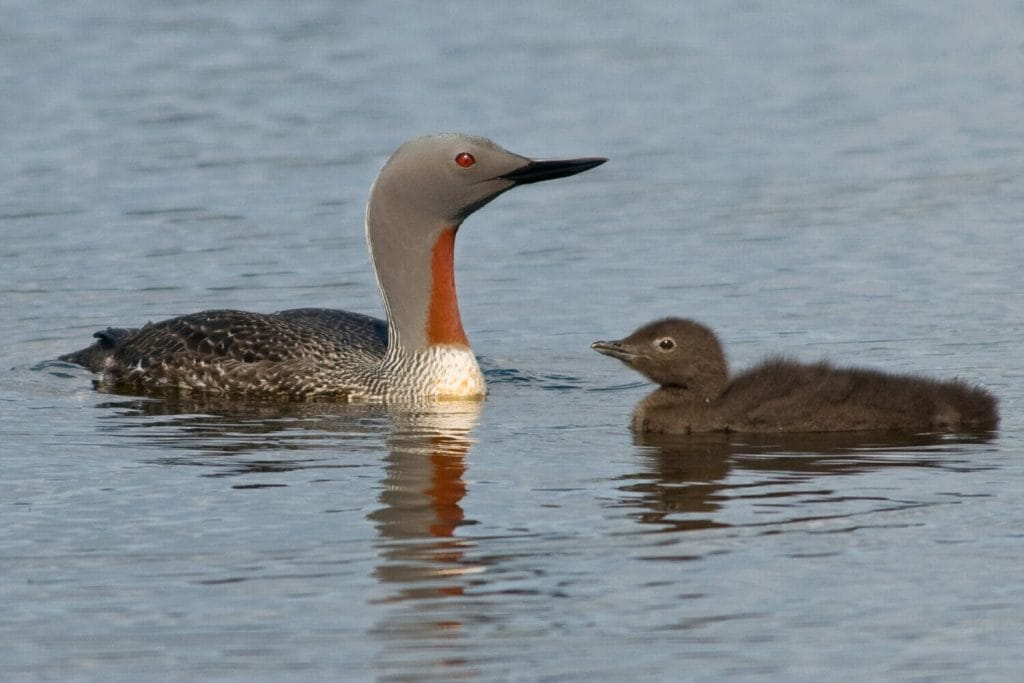
Identification
This is a small member of the loon family and is a fairly non-descript gray color out of the breeding season. Adult plumage changes during breeding and the back becomes darker, blending into a gray neck. The throat is a startling red, ending abruptly at the top of the breast.
Length: 25.2 – 26.8 inches
Wingspan: 35.4 -36.6 inches
Weight: 44.1 – 86.8 ounces
Distribution

The Red-throated Diver is mainly found in the north eastern parts of Florida in small numbers over winter and spring.

Call
Diet
The Red-throated Diver is the only loon species to travel far away from its nesting site to look for food. It eats primarly small fish.
Interesting Fact
The Red-throated Diver or Loon swallows small stones that sit in its gizzard. These help grind up the hard to digest parts of their food.
Red-necked Phalarope (Phalaropus lobatus)
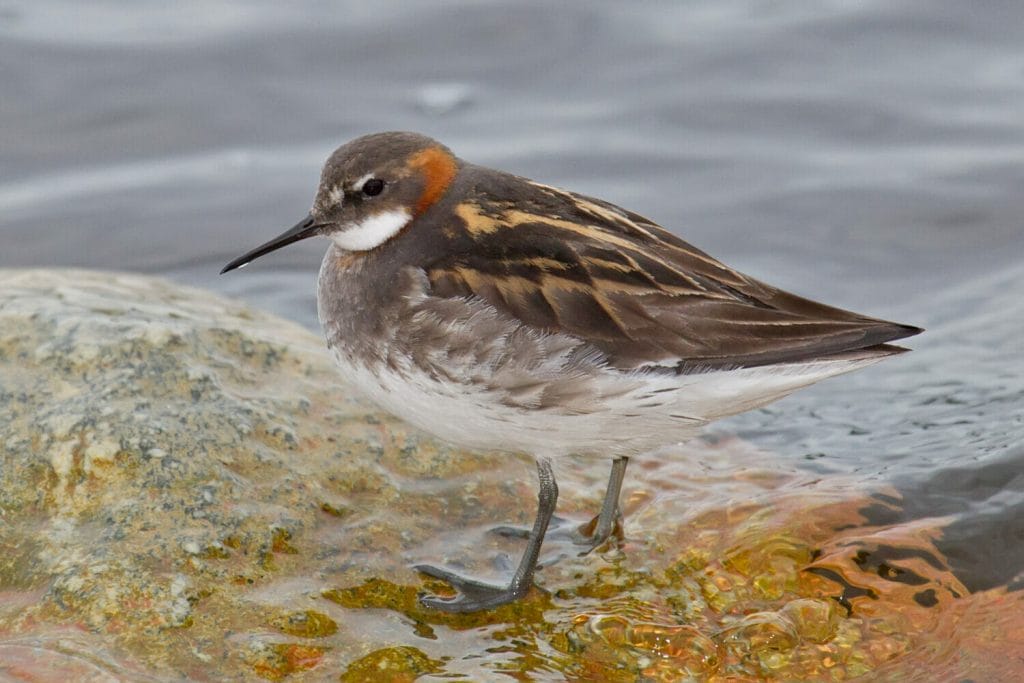

Identification
Another bird that changes a great deal during the breeding season. Out goes the pale plumage with dark patches on the back and head and in comes a stunning red and brown back that blends into that glorious neck. A white throat and small eyebrow complete the picture.
Length: 7.1 – 7.5 inches
Wingspan: 12.6 – 16.1 inches
Weight: 0.9 – 1.4 ounces
Distribution
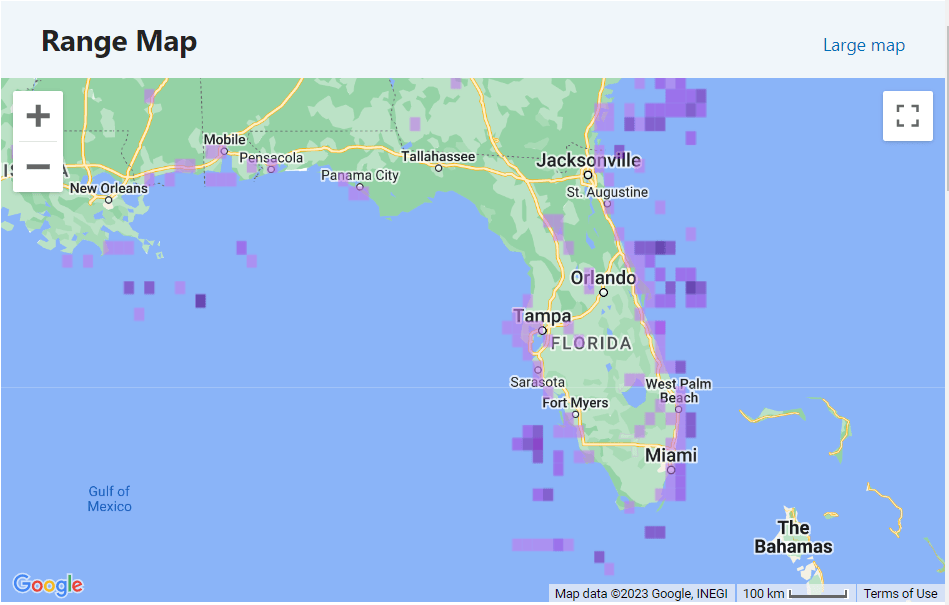
As a shorebird, the Red-necked Phalarope may turn up anywhere. The Range map above and distribution chart below show that it is present in Florida in low numbers during the majority of the year and is likely to be found along any part of the coast except for the north western part.

Call
Diet
The Red-necked Phalarope will look for food in any kind of aquatic environment, taking small invertebrates or insects.
Interesting Fact
Just for once, it is the female who outshines the male in the glamor stakes. During breeding periods, they both have stunning plumage but the female’s is just a bit better than the male.
Red-breasted Merganser (Mergus serrator)

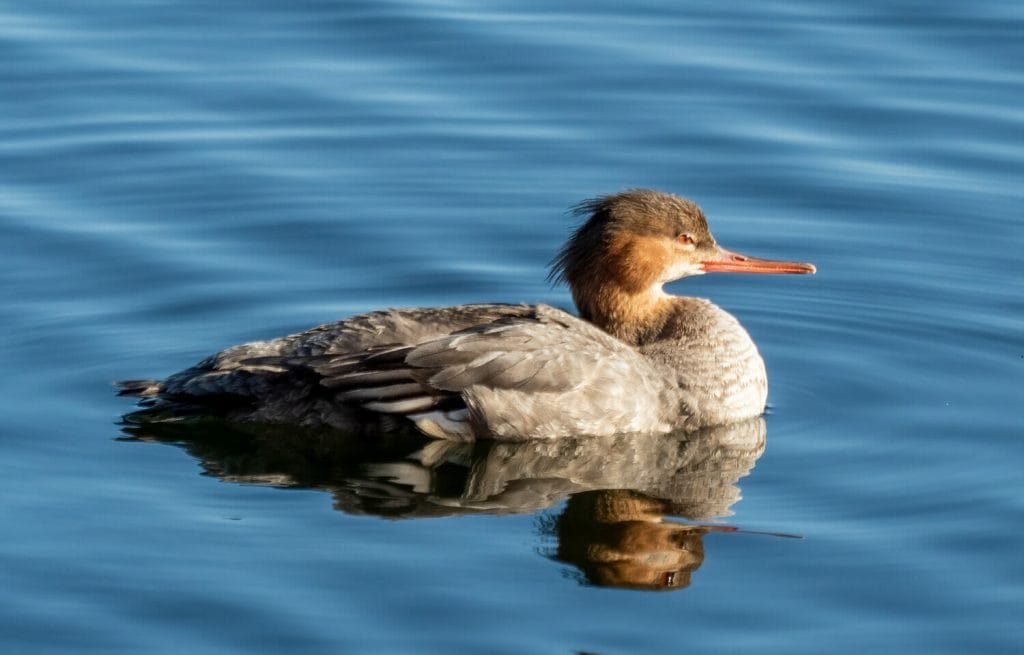
Identification and Size
This is a large duck with incredible breeding plumage. The male develops an array of black, white and gray patterns on its back and a mottled red breast changes abruptly into a white neck. The head is black with a loose crest and the eyes and bill are also red. The female, is a duller, faded version.
Length: 20.1 – 25.2 inches
Wingspan: 26 – 29.1 inches
Weight: 28.2 – 47.6 ounces
Distribution
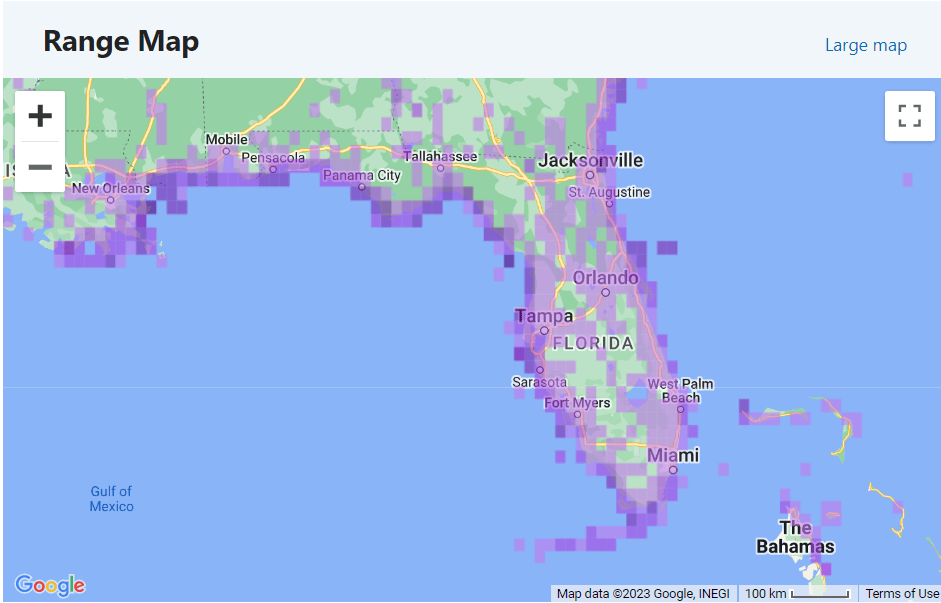
The Red-breasted Merganser overwinters in Florida, largely along the coast but also in the center of the state.

Call
Diet
This merganser is adaptable and while it primarily eats small fish, it will also eat crustaceans, insects, worms and some plant material.
Interesting Fact
They might look like sedate birds but these mergansers have to work hard for their food. It is estimated that they need up to 20 fish a day and may have to dive up to 300 times to get that amount.
American Redstart (Setophaga ruticilla)
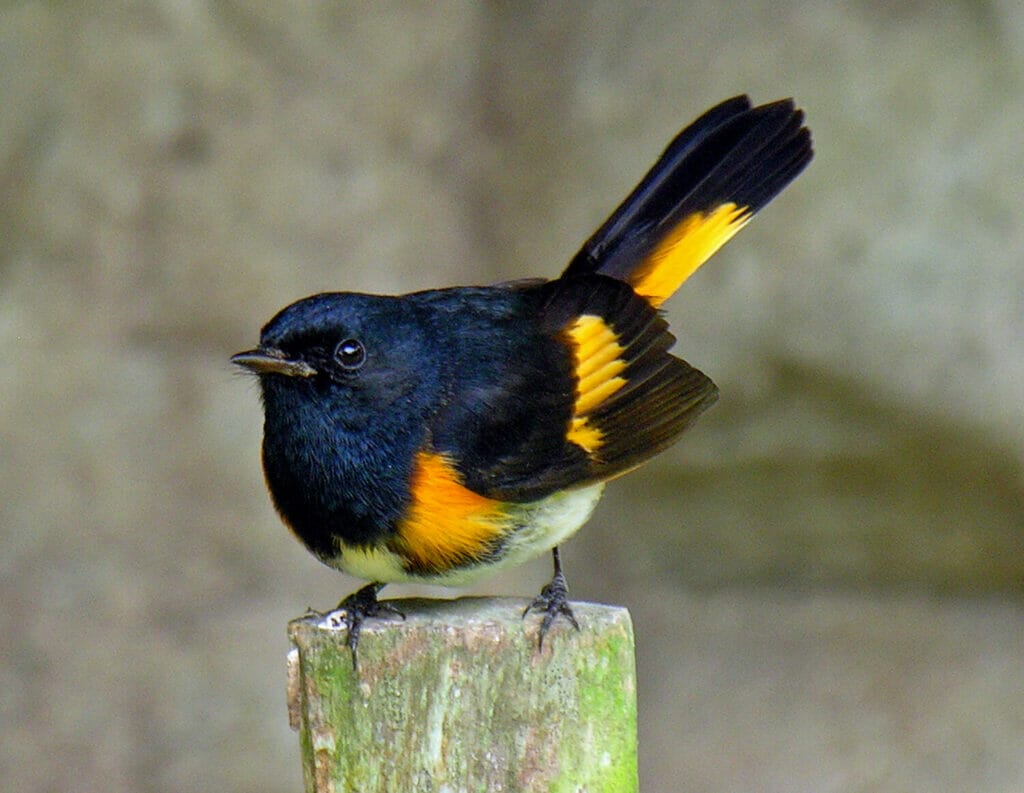
Identification and Size
The female redstart is a not unattractive gray and lemon colored. Markedly different, however, is the male. He is black above and has an orangey/red series of bars along his side, wing and tail.
Length: 4.3 -5.1 inches
Wingspan: 6.3 – 7.5 inches
Weight: 0.2 – 0.3 ounces
Distribution
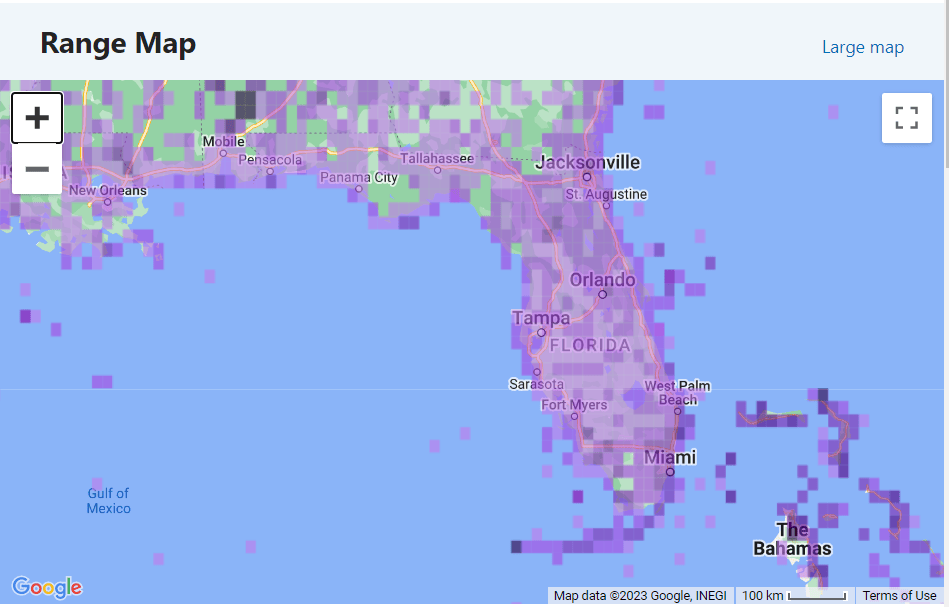
The American Redstart can be seen in relatively good numbers throughout the whole of Florida with concentrations in spring and the fall.

Call
Diet
While overwintering in Florida in the non-breeding season, the American Redstart will eat small insects like flies, beetles and ants.
Interesting Fact
When hunting, the American Redstart flashes its colorful wings and it is thought that this may shock the insect prey and give the bird the upper hand in pursuit.
FAQs
If you Google this question, the answer will probably not include any of our choices. Cardinals, finches, woodpeckers and tanagers will come up. However, as birders, we wanted to look for the less common and arguably more interesting birds.
Unfortunately, native species like the American Flamingo populations were hunted out of existance in Florida. Exotic species like parrots are present but are likely to be escapees.
That will be the Northern Cardinal. A stunning red bird, but covered in other posts.
Thanks for reading our post about red birds in Florida. This is our 4th post about different colored birds in Florida and we aren’t running out yet. Let us know what you would like to see next.




